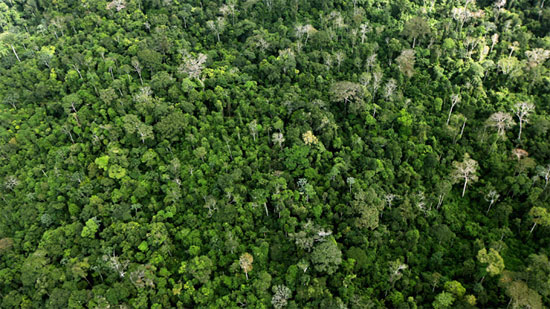Human remains 10,000 years ago at Amazon
The ruins of a 10,000 year old man have been found in Bolivia and become the oldest archaeological site in the Amazon region.

Photo: latino.foxnews.com
Swiss archaeologists have discovered vestiges traces after analyzing the islands found in the Amazon forest. Just watching the soil tissue, scientists can show the history of the area and the activities of the ancient people.
In this study, the authors from the University of Bern found 3 piles of residual seashells of people in the pre-Holocene period, about 10,400 years ago. Soil samples from these three mounds revealed the formation of shells, animal bones and coal. The radioactive carbon analysis of the relics shows that humans once settled in the Amazon Bolivian regions during the pre-Holocene period, shells and other artifacts formed mounds over a period of 6,000 years after their user.
This finding is surprising to experts because it was previously thought that these areas were rarely resided by communities due to poor environmental conditions.
Daily Mail page quoted Professor Umberto Lombardo of Bern University: "We have discovered the oldest archaeological site in western and southern Amazon. These sites allow us to reproduce the interaction between people and the environment 10,000 years ago in the Bolivian region of the Amazon region ".
- Mysterious remains of women belong to another human species
- Discover the remains of prehistoric people in the Amazon forest area
- Found the remains of ancient people 3,500 years ago
- Amazon forests are being destroyed at an unprecedented speed in the last 10 years
- The erosion coast reveals six remains hundreds of years old
- Terrible consequences of the Amazon forest fire
- The bloodthirsty monsters hide in the Amazon jungle
- Detecting the remains of cancer patients 4,500 years ago
- Decipher mysterious human bones in China
- Detecting ancient human remains 1.8 million years in Indonesia
- Amazon River 11 million years old
- The Middle East may be the cradle of humanity
 Discovered an ancient centipede fossil 99 million years old
Discovered an ancient centipede fossil 99 million years old Discovered bat-like dinosaurs in China
Discovered bat-like dinosaurs in China Discovered a 200-year-old bronze cannon of the coast
Discovered a 200-year-old bronze cannon of the coast Discover 305 million-year-old spider fossils
Discover 305 million-year-old spider fossils